The virus, which has the superb name of “Corona,” by extinguishing all social articulation in our beloved country has rendered recondite even some exhibitions that one would like to call “minor,” but which always fulfill the function of revealing the connective of the arts, that throbbing fabric that has extended over the centuries from the workshops of the artisans to the thousand possible venues: the churches, monasteries, chapels, palaces, villas and gardens, houses, streets, popular and richer street furniture, down to the small majesties, pillars, and even the well-kept quarters of the farms.
A connective that often does not yield to titular art, but comes with its models in many cases from the workshops of the masters, precisely those who in the great works achieved celebrity. This is one of the wonders of Italy, of this Italy that reserves everywhere sparti places, all to be discovered, and an infinity of small towns with admirable appearance. In recent years, some positive phenomena are to be reported, which seem to follow in the ancient footsteps of the Honorary Inspectors of Fine Arts, in their time all devoted to prospecting every nook and cranny, to censuses diligently reported in handwritten and hand-drawn notebooks. One of these phenomena is hamlet tourism, which is catching on and gratifying travelers with felicitous satisfactions-we should develop it more through popular education. Another is due to private collecting that more now turns to small wonders, defying the initial anonymity of many works but meritoriously helping the light of studies: in this Exhibition a rare Donatello Madonna in polychrome papier-mâché stands out, the loan of which comes with great love from the collection of Cristina Grimaldi and Gianni Fava. A third reality is that of the establishment of the diocesan Offices of Cultural Heritage, which finally contribute with systematic application to the rediscovery and enhancement of entire constellations of sacred art hitherto submerged in indifference and carelessness. We speak here of Offices directed by people who are sensitive and open to the necessary collaborations.
And it is in the Diocesan Museum of Padua that one of the Exhibitions that we must now call “silent” opened last February 15, but which we hope to see again in late spring or later in the year. A review that certainly descends from an exciting campaign of recovery but also from a broad critical-historical framing of terracotta sculpture in the Veneto area: an amplitude this of invigorating broad scope, accompanied by a connection with a Lombard venue equally necessary to tie types and artifacts together. An exhibition of only 23 pieces, but accompanied by a mighty Catalogue, all compiled by scholars of clear renown whose essays are incisively illustrated, containing, moreover, an enlarged, spectacular photographic campaign of genuine value, and with an extremely valuable final Atlas: a true milestone in its field (Scripta Edizioni, Verona).
The title of the Exhibition is as expressive as it gets, and the reason for the entire initiative is brought back to Donatello’s enlightening, prodigious presence in Padua for an entire decade (1443 - 1453). An event capable of disrupting with a life-giving force the entire territory of the university city par excellence, and also capable of creating such a host of collaborators-continuators as to reverse here the artistic phenomenon we exultantly call “the Renaissance.” If the Florentine sculptor’s opus magnum can be encompassed in the two mighty undertakings of theAltar of the Saint and the Equestrian Monument to Gattamelata, it is necessary on the other hand to inquire, to realize the whole activity of the workshop and the daily necessities it entailed.
Donato dei Bardi left his city in 1443 when his great friend Brunelleschi was still living, when he had already produced splendid figures and compositions there, and where he enjoyed the open esteem and patronage of the Medici. Vasari makes no secret of Donatello’s difficult character and his polemics with his fellow citizens; in fact he left Florence for the call to Padua with a small caravan of wagons and helpers, and with the relatives of some of these: a sort of exodus of a small people with lasting prospects. On the wagons the basic tools of the trade, in the mind also the problem of sustaining the group during the many stages of the journey. And here the sale of religious subjects of short dimensions is already expected, and it begins precisely from Bologna, where between the city and the countryside replicas of the Madonna of the Nativity are still numerous today, marked by the harmonious and sweet silhouette of the lotus flower. This is how the Master models, and this is how the workers execute: such will be the continuity in Padua, always through the use of ductile materials: clay, which becomes terracotta, stucco, even papier-mâché whose mother-form to the negative will disappear in time, but whose impression totally preserves the original imprint, enriched by careful painting.
In the Euganean center, the workshop’s twofold rhythmic commitment continues: on the one hand the manifold and articulate installations for large commissions, and on the other, as mentioned above, the care to the small incomes of subsistence, the listening to the minor requests for families and for secondary churches, the complacent attention to sustain the happiness of a people-so well perceived-of having near them, in the city, that artistic source so expressive, so beloved, which bestowed trembling Madonnas with Child, exquisite shrine plaques, and moving Passions of Jesus. Here, then, Donatello’s presence expands and becomes diffuse in the hands-sometimes bound, sometimes freer-of his helpers and collaborators.
Thus in the Exhibition, after Donatello (Florence, c. 1386 - 1466) who opens with the magnificent Madonna Vettori, which came specially from the Louvre, we will meet Giovanni di Francesco da Pisa, a classical and very amiable modeler, who came to Padua at the height of Donatello’s activity; Pietro Lombardo himself, the bearer of the marble Renaissance in Venice (ivi +151515), here present with the terracotta Madonna da Schio; the exuberant Bartolomeo Bellano, born in Padua between 1437 and 1438, who entered the master’s atelier at a very young age, gathering his master’s impulsive spirit, and becoming the spreader of what we might call a dilated Donatellism; and the mystical, admirable sculptor Giovanni de Fondulis (Crema 1435, circa Padua, ante 1491), who from Lombardy took to Padua in turn with a particular vocation for the tuttotondo, treated with delicate virginal forms, but also able to turn to the drama of the Passion. We will meet again the little-known Antonio Antico with a bust annotated at the end of the 15th century, and finally the valid powerful sculptor Andrea Briosco, known as the Riccio (Padua or Trent, 1470 Padua, 1532), famous for his bronzes and small bronzes, but possessor of a full statuary ability: here present with some strong specimens and especially for the recomposition of the Compianto whose extraordinary Cristo Morto in polychrome terracotta (cm. 175) still remains in the possession of the church of San Canziano in Padua.
The overall cultural framework of the Exhibition is of very considerable value. The curators are: Andrea Nante (Director of the Diocesan Museum), Carlo Cavalli, Aldo Galli. The learned authors of the essays bear the names of Andrea Nante, Francesco Caglioti, Matteo Facchi, Aldo Galli, Marco Scansani, and Davide Gasparotto. The latter, luminous eminence of the J. Paul Getty Museum in Los Angeles, ideally returns to Padua, near the Palazzo del Monte di Pietà that hosted “his” unforgettable Pietro Bembo Exhibition in 2013. The excellent and generous photo campaign is due to Marco Furio and Mauro Magliani. Visitors to Padua at the end of this viral period will thus be able to feel themselves enveloped in the embrace of a tour of lofty historic architecture that all contain treasures of sacred and secular art: the Palazzo del Monte del Falconetto, the Cathedral, the celebrated Baptistery with frescoes by Giusto de’ Menabuoi, the Bishop’s Palace, and here the recent and valuable Diocesan Museum.
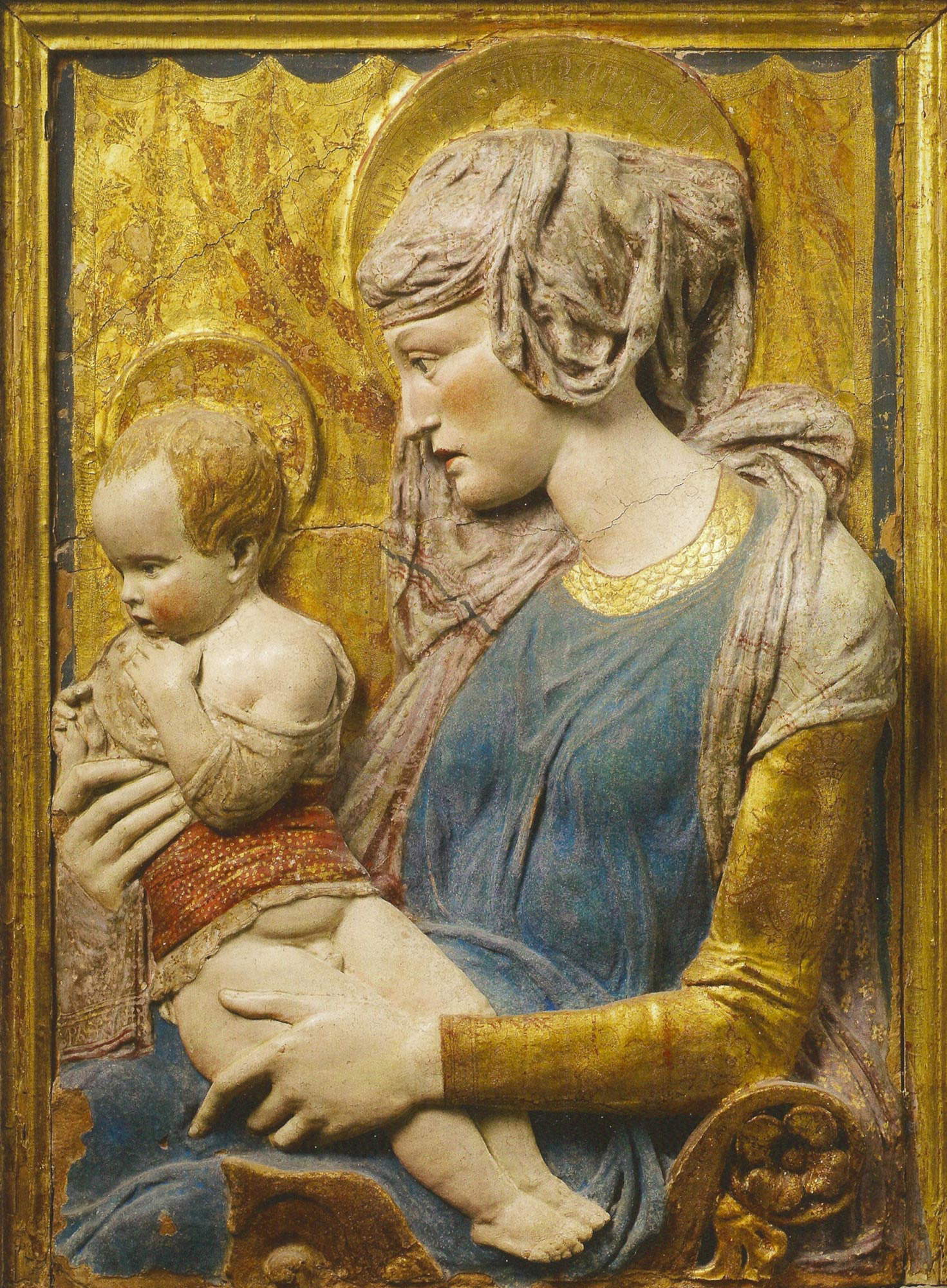 |
| Donatello, Madonna and Child (Madonna Vettori) (polychrome and gilded terracotta, 102 x 74 cm; Paris, Louvre) Donatello’s straightforward autograph inspiration can be seen in it, with sharp relief. |
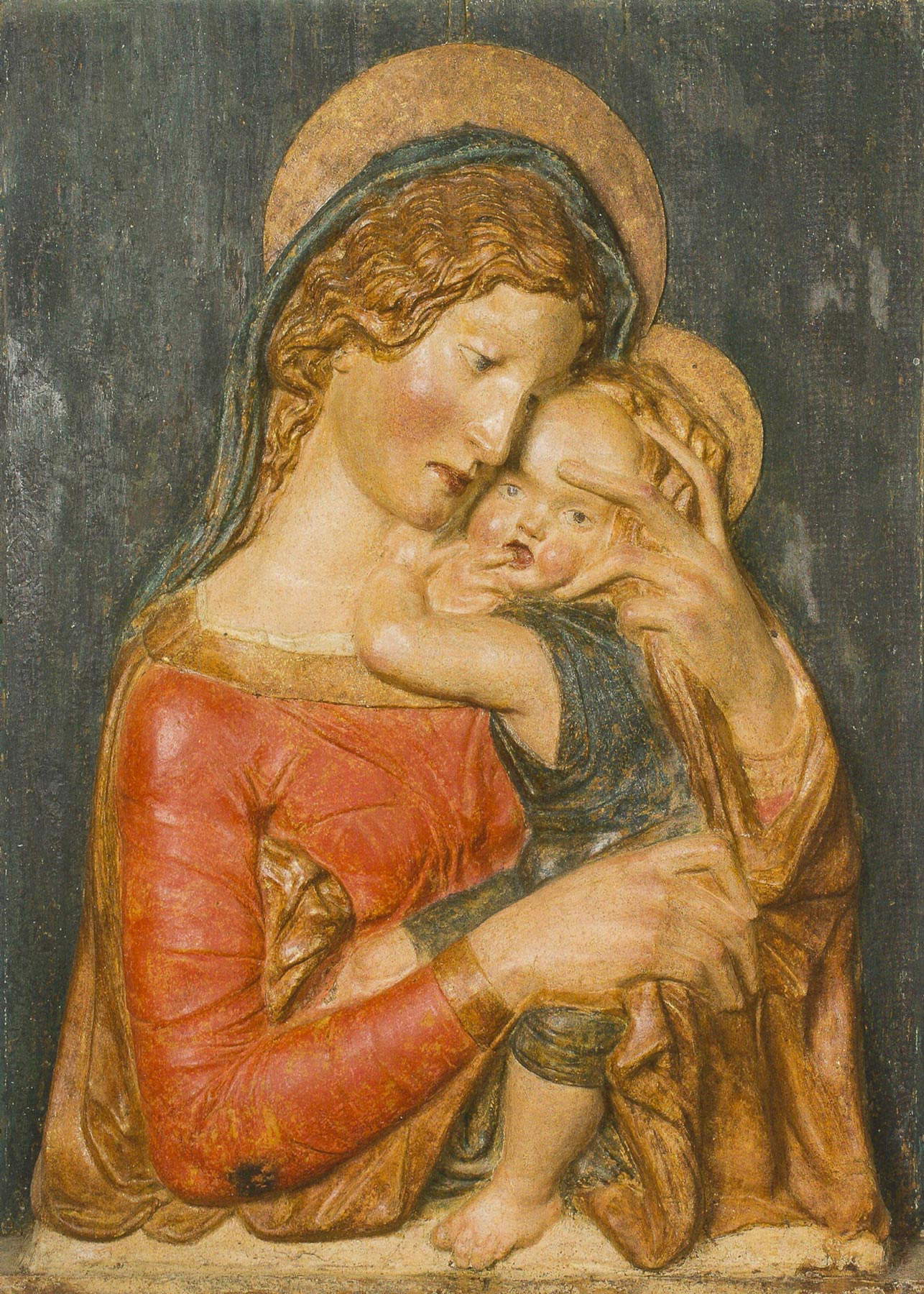 |
| From Donatello, Madonna and Child of the type called “of Verona” (polychrome papier-mâché, 90 x 58 x 17 cm; Cento, Grimaldi-Fava Collection) Avery rare work, it preserves intact the original imprint of the Master and above all that extreme suavity of which Donatello was capable in these contemplations of sacred motherhood. The touching detail is matched by the character of the prized “love collection” of the Grimaldi-Fava couple |
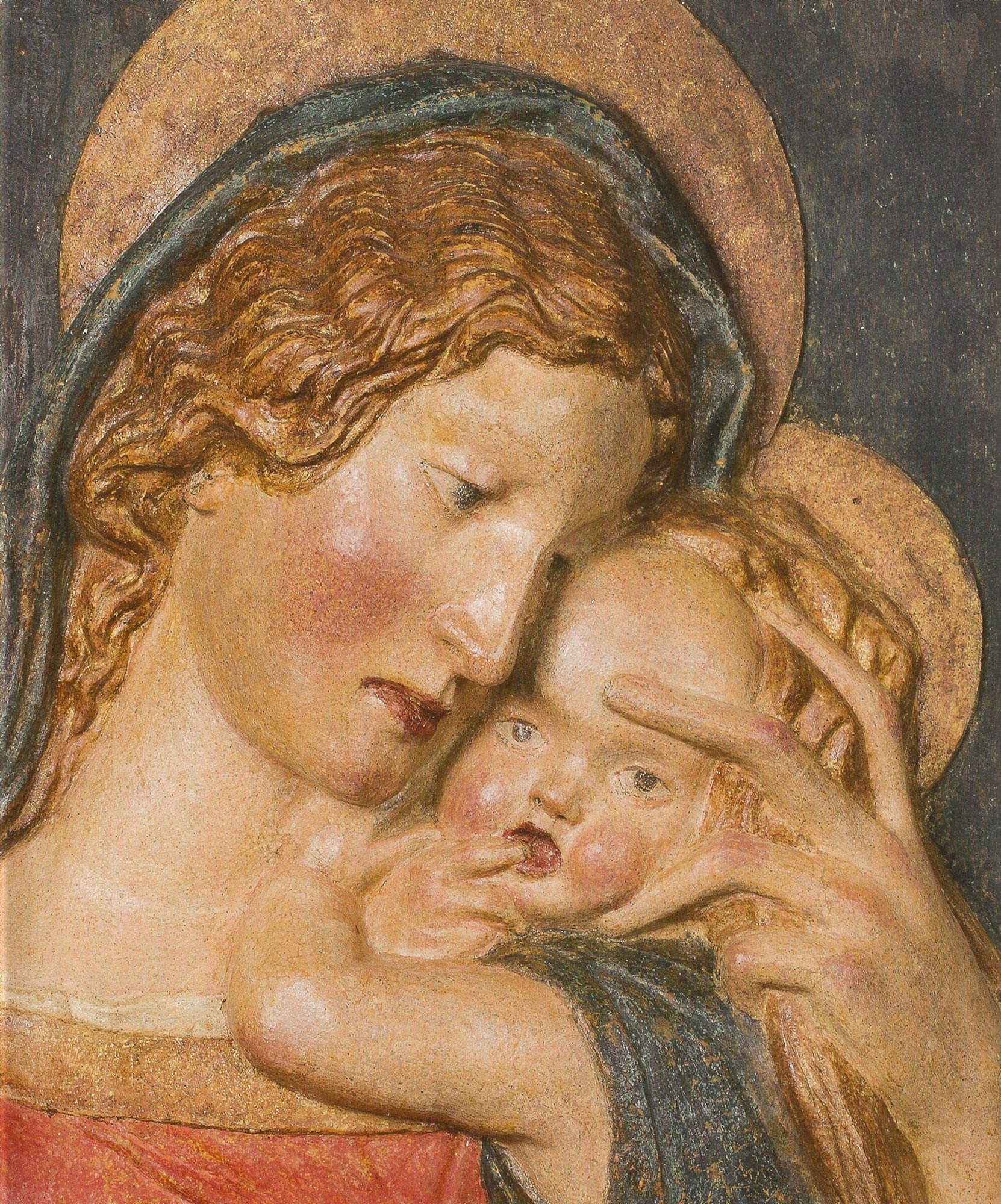 |
| By Donatello, Madonna and Child of the type known as “of Verona,” detail |
 |
| Giovanni di Francesco da Pisa, Madonna and Child (terracotta already polychrome and gilded, 83.5 x 52 cm; Fort Worth, Kimbell Art Museum) Splendid classical piece by the Tuscan sculptor who here combines monumentality with harmonious and even moved composition. |
 |
| Bartolomeo Bellano, Grieving Female Figure (polychrome terracotta, 44 x 49 x 17 cm; Padua, Museo Diocesano) Of undocumented original role, the figure well represents Bellano’s character, inclined to expressionism, here accentuated by the sorrowful role.Theexhibition also displays a fictile statue of a Franciscan saint, with a strong oratorical layout. |
 |
| Ambit by Bartolomeo Bellano, Lamentation over the Dead Christ (late 15th century; polychrome terracotta, side figures height 93 and 96 cm; Padua, Church of San Pietro) Example of the continuity of these groups, many of which have now disappeared, that responded to popular piety, very much alive in the re-enactment of the Passion of Jesus. |
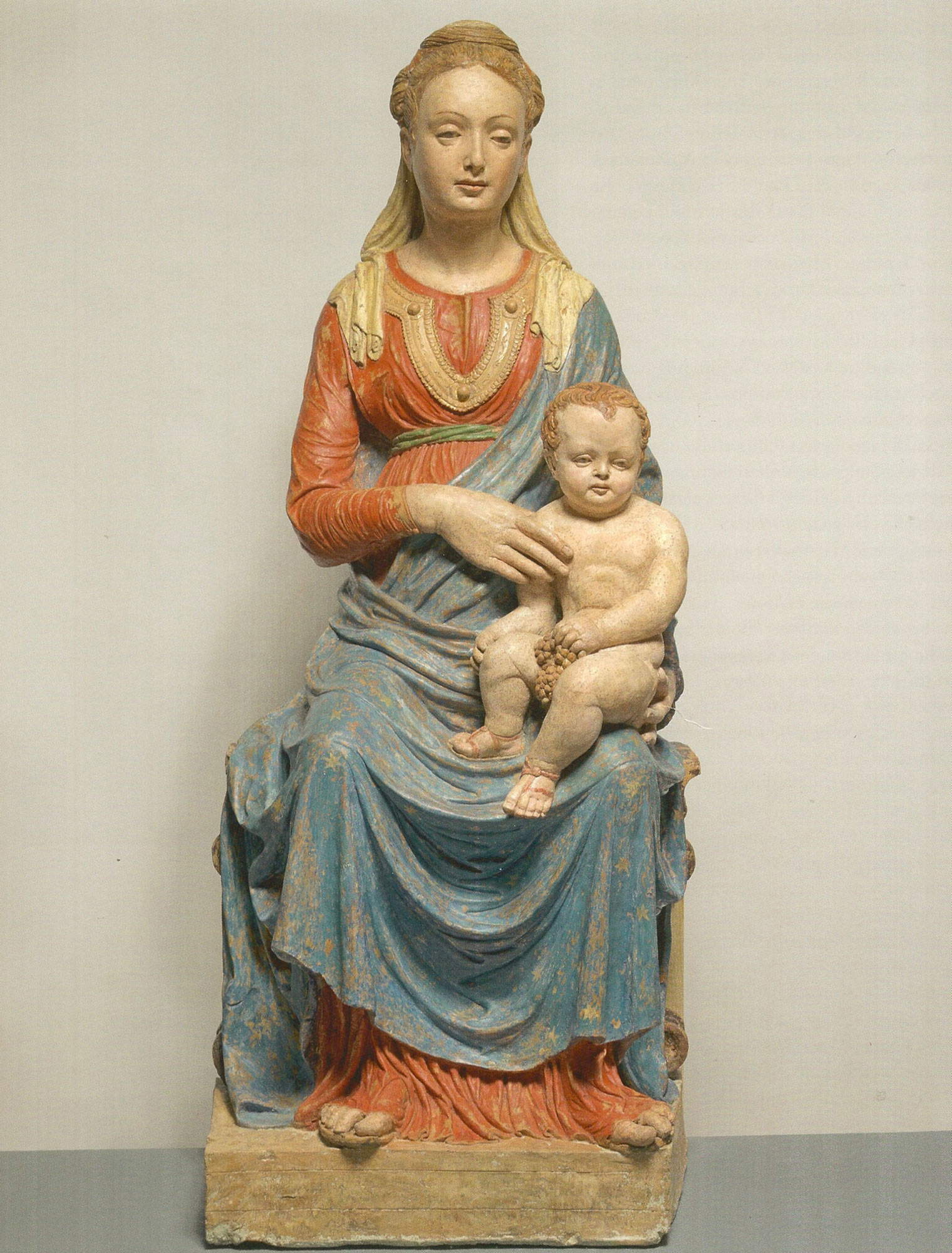 |
| Giovanni de Fondulis, Madonna and Child Enthroned (c. 1460; polychrome terracotta, 125 x 48 x 35 cm; Padua, Church of San Nicolò) Typical work by the Cremasque sculptor, who loved the tuttotondo and infused his figures with a touching softness, born of the heart and reaching to the heart. The exhibition displays other pieces by this artist, always enveloping in beauty. |
 |
| Giovanni de Fondulis, Pieta (1480-1485; polychrome terracotta, 101 x 65 x 19 cm; Prozzolo di Camponogara, Church of St. Michael the Archangel) Even in the sacredly tragic theme de Fondulis maintains his harmonious compositional meter, and in the faces of Jesus and Mary he achieves an intense reality, divine and human. |
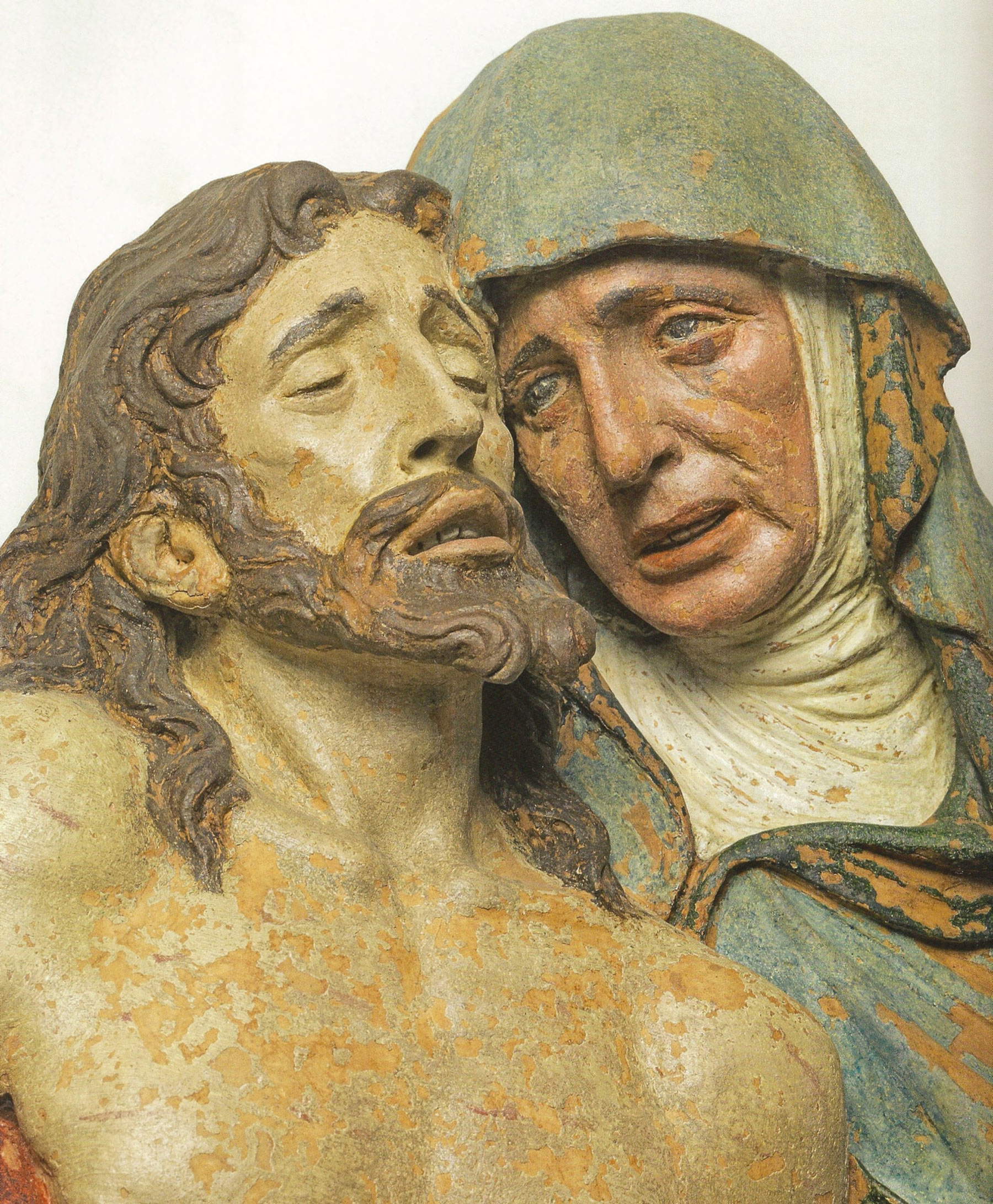 |
| Giovanni de Fondulis, Pieta, detail |
 |
| Antonio Antico, San Bellino (post 1491; polychrome terracotta, 57 x 33 x 21 cm; Padua, St. Peter’s Church) Rare piece by this sculptor, sharp and precise, who married the daughter of de Fondulis. The bust of San Bellino today is a piece that we can call “wandering,” and one that demonstrates-within the short corpus assigned to it-a particular plastic vigor. |
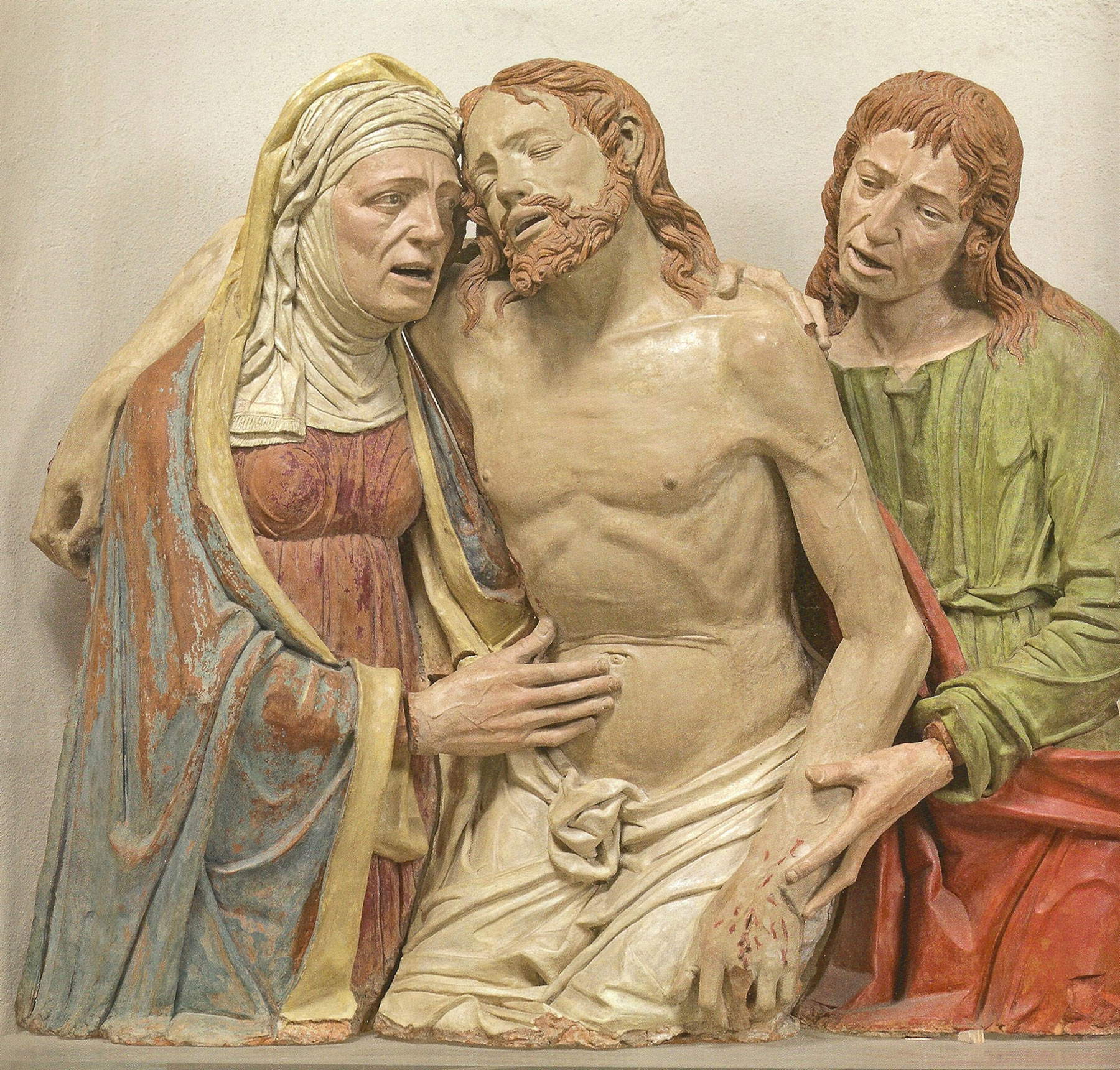 |
| Andrea Briosco known as Il Riccio, Christ in Pity, Supported by the Madonna and St. John the Baptist (polychrome terracotta, 90 x 110 x 18 cm; Due Carrare, Church of Santo Stefano) Asculptor of great renown, he offers us this masterpiece of animated reality, admirable for its compositional and chromatic rhythmicity, and even more so for the authentic burst of sharing that it communicates to us. |
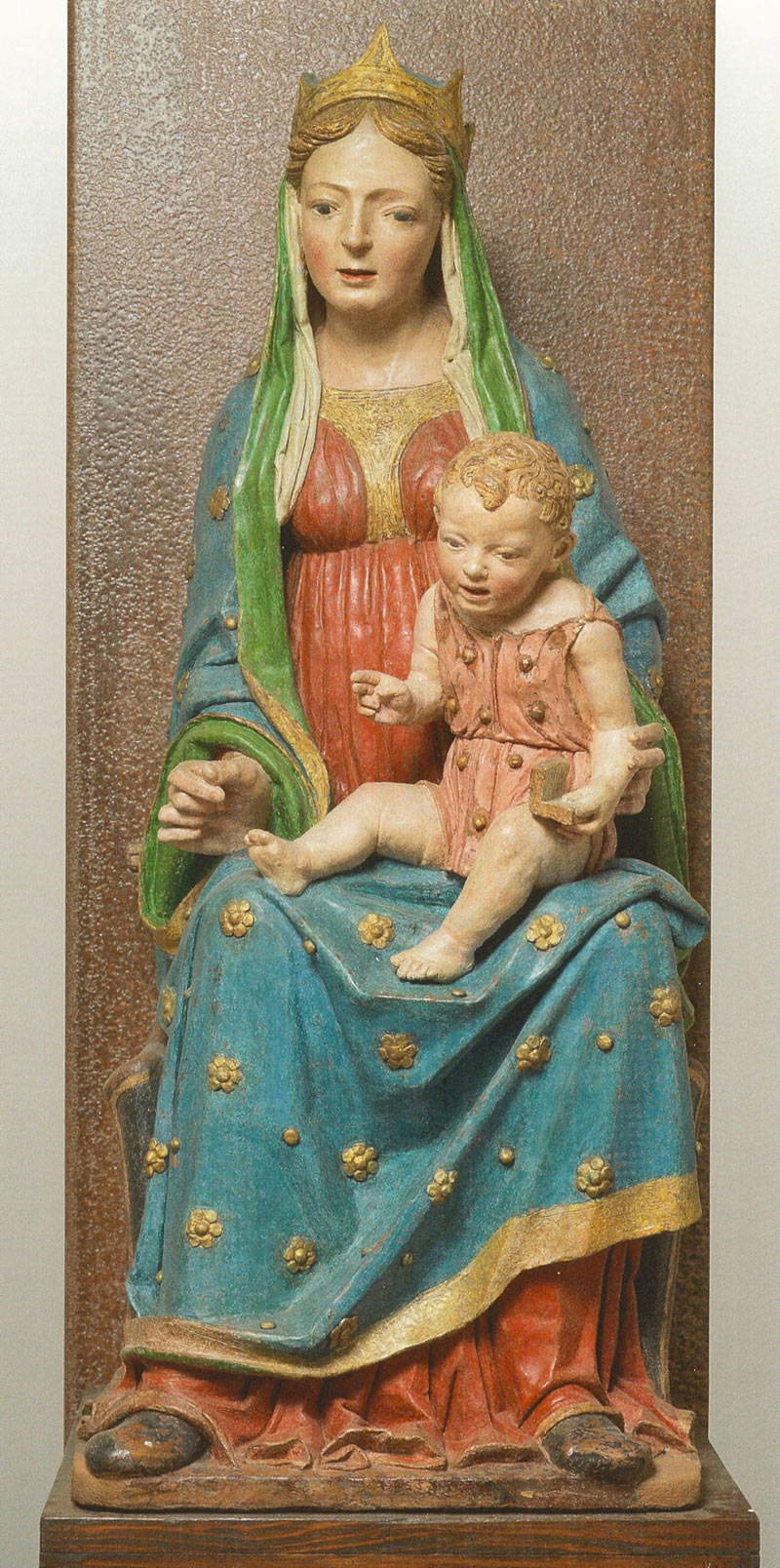 |
| Andrea Briosco known as Riccio, Madonna and Child Enthroned (c. 1495; polychrome terracotta, 130 x 54 x 54 cm; Campiglia dei Berici, Church of San Pietro) The crowned young Virgin could hold a scepter in her right hand. From their throne and eternal glory, the sweet Mary and the divine Child, holding the book of Scripture, expressly speak to us of the people and instill in us a saving confidence. This beautiful artistic resolution fully justifies the important part of the title of the Exhibition In Our Image. |
Warning: the translation into English of the original Italian article was created using automatic tools. We undertake to review all articles, but we do not guarantee the total absence of inaccuracies in the translation due to the program. You can find the original by clicking on the ITA button. If you find any mistake,please contact us.